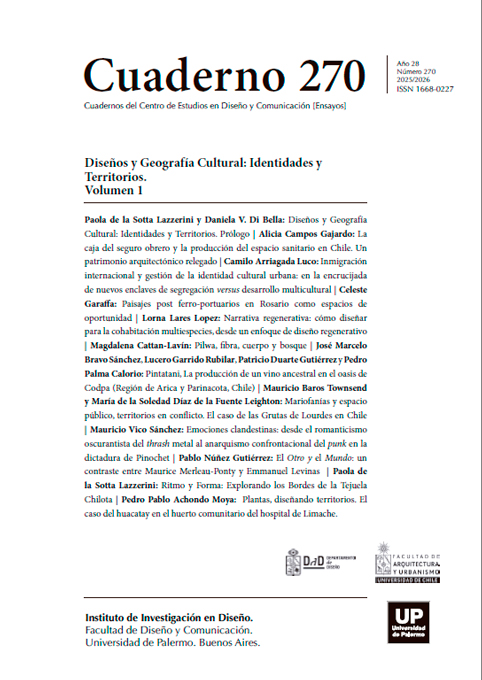Pilwa, fibra, cuerpo y bosque
Résumé
El artículo explora la elaboración del Pilwa, una práctica artesanal tradicional profundamente arraigada en los ritmos culturales y ecológicos de una comunidad artesanal en el Lago Budi.
Références
Cappuccio, M. L. (2015). Introduction: when embodied cognition and sport psychology team-up. In Phenomenology and the Cognitive Sciences (Vol. 14, Issue 2, p. 213). Springer Nature. (DOI: https://doi.org/10.1007/s11097-015-9415-1).
Daresh, J. C. (1991). The Principalship: A Reflective Practice Perspective, 2d ed. In NASSP Bulletin (Vol. 75, Issue 535, p. 113). SAGE Publishing. (DOI: https://doi.org/10.1177/019263659107553524).
Groth, C. (2017). Making sense through hands: Design and craft practice analysed as embodied cognition. Doctoral Dissertation. Aalto University.
Los autores/as que publiquen en esta revista ceden los derechos de autor y de publicación a "Cuadernos del Centro de Estudios de Diseño y Comunicación", Aceptando el registro de su trabajo bajo una licencia de atribución de Creative Commons, que permite a terceros utilizar lo publicado siempre que de el crédito pertinente a los autores y a esta revista.


